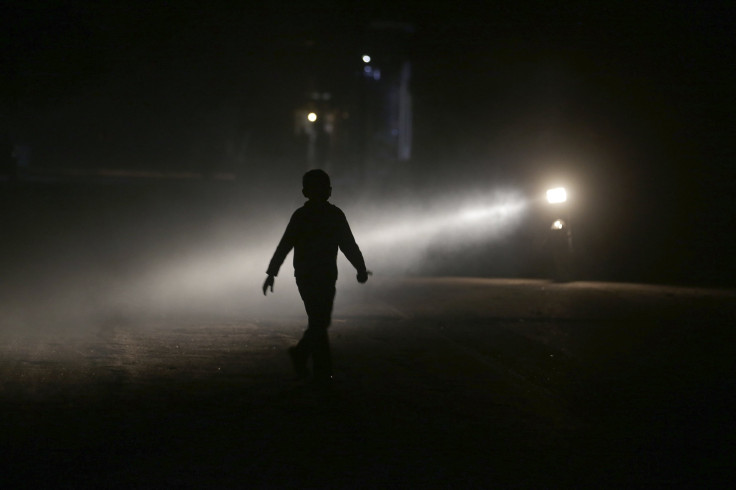Syrian Civil War: Country Sees 83% Decline In Lighting, Petition Launched To 'Turn Lights Back On'

Satellite images released Thursday and analyzed by scientists have revealed that the amount of lighting visible over Syria at night has fallen by 83 percent since the war began in March 2011. A coalition of more than 130 nongovernmental organizations (NGOs) has launched a video and petition to improve the lives of Syrians in the war-torn country.
“Four years since this crisis began, Syria’s people have been plunged into the dark: destitute, fearful, and grieving for the friends they have lost and the country they once knew,” said David Miliband, president and CEO of the International Rescue Committee, in a statement on the campaign page. “Syrians deserve much better from the international community -- it is past time to show that we have not given up and will work with them to turn the lights back on."
The video, titled “Afraid of the Dark,” was released Wednesday by the coalition, named With Syria. It appeared ahead of March 15, which will be the four-year anniversary of the Syrian civil war between President Bashar al-Assad’s government and various armed rebellion groups, including the so-called Islamic State. The campaign focused on how the lives of Syrians have been affected by the war -- including the reduction in electricity. Examples include teachers risking their lives to keep schools running and doctors performing surgery by the glow of cell phones.
The campaign was propelled by the narrative that most provinces in Syria experienced at least a 70 percent decline in lighting. Aleppo’s lighting fell by 97 percent, the steepest drop of all sampled regions, followed by Raqqa (96 percent); Idlib (96 percent); Deir ez-Zor (90 percent); Latakia (88 percent); Hama (87 percent); Homs (87 percent); Tartus (87 percent); Rif Dimashq (78 percent); al-Hasakah (77 percent) and Daraa (74 percent). Only Damascus and Quneitra experienced much lesser declines of nighttime lighting, at 33 percent and 47 percent, respectively.
The data was produced by satellite imaging analysis from Wuhan University in China and the University of Maryland. “Taken from 500 miles above the earth, these images help us understand the suffering and fear experienced by ordinary Syrians every day, as their country is destroyed around them,” said Xi Li, the lead researcher on the imaging project. According to the New York Times, the researcher said that "power cutoffs and destruction of infrastructure were the main reasons for the decline" in lighting throughout the country.
More than 20 international aid groups criticized the U.N. Security Council on Thursday for failing to boost humanitarian assistance to Syrian civilians after passing resolutions to do so in 2014. “Last year was the darkest year yet in this horrific war,” said Jan Egeland, secretary general of the Norwegian Refugee Council, according to Al Jazeera. “Parties to the conflict have acted with impunity and ignored the Security Council’s demands, civilians are not protected and their access to relief has not improved.”
The Failing Syria report highlighted that 76,000 people were killed in 2014 -- the deadliest year yet -- and aid access had not improved. Funds provided to support civilians inside Syria have also decreased by about 15 percent. More than 220,000 people have been killed so far, nearly four million Syrians have fled and registered as refugees in neighboring countries, and another 7.6 million people have been displaced within Syria.
© Copyright IBTimes 2025. All rights reserved.






















